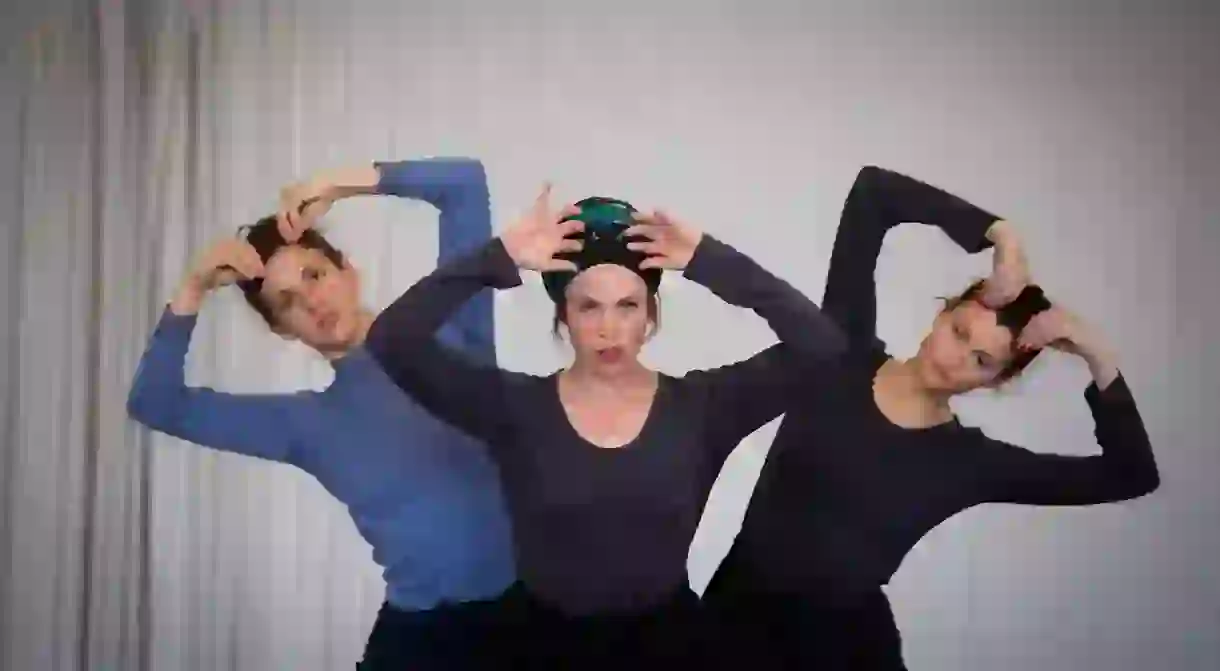Israeli Dance Group Nehara, Dances And Davens

In Israel, the disciplines of ritual davening and a dancer’s daily développés occupy different worlds. The combination of daily prayer and rigorous dance practice do not typically go hand in hand. Most Orthodox Jewish women are not given the opportunity to train in professional dance, let alone establish a career. But Artistic Director Daniella Bloch found a way when she launched the all-female Orthodox Nehara Dance Group in 2011.
For dancers Leia Weil, Snunit Baraban and Dalia Peretz, Nehara provided them with an unlikely home. In previous endeavors, Nehara’s dancers attempted to maintain their religious practice, including Sabbath observance and still keep up with regular professional dance company schedules. Ultimately, each dancer found she was forced to choose between the two. Bloch remembers this ‘earthquake inside me’ that ‘affected my ability as a dancer and as a Jewish woman.’ To a great satisfaction, Bloch has eliminated this painful dilemma for her dancers by creating a space where Judaism and dance are no longer in conflict; instead, they enliven each other.

As a retired professional dancer, Bloch knows all too well what she describes as the ‘look at me I’m Sandra Dee’ dancer attitude. While dance is an intrinsically exhibitionist art-form, Nehara takes a different approach. Working together, the dancers bring a certain ‘anava or quiet’ to rehearsal and performance.
Bloch insists on rigorous dance training, fascinatingly parallel to the discipline required for Torah study. ‘It is very hard because the dance profession is a religion in itself, a way of life.’ For Bloch, the comparison to orthodox Judaism is crystal clear. ‘You wake up every morning, tfilat shacharit, do your demi plié, every single day, rain or shine, happy not happy, sick not sick, connected not connected.’ While Nehara’s repertoire is not necessarily religious in content, Bloch believes in the powerful physicality of Judaism. She explains that the physical component ‘was lost because we were in the galut (diaspora), we were busy surviving. Now we are back in Israel addressing the physicality of the body. Maybe Miriam didn’t do a grand jeté, but she was expressing herself physically.’
Bloch is interested in starting two conversations: one within her own Orthodox Jewish community and the other in the dance world. Since much of the Tel Aviv dance scene displays scant costumes and sexually charged movement, the religious community is unable to attend regular performances. Observant dancers simultaneously find it difficult to compete with secular dancers who have no sartorial or scheduling restrictions. Thanks to Nehara’s modest costumes and respect for the Jewish calendar, observant Jews with little or no awareness of the dance world can experience a contemporary Nehara performance, showcasing members of their very own community.

Bloch handpicks prestigious contemporary female choreographers residing in Israel, including Rachel Erdos, Tammy Itzhaki and Sonia Dorleans Juste. Bloch requires that collaborators ‘connect with who we are as a group’ but insists that they ‘do not necessarily need to know something about Orthodox Judaism.’
A recent rehearsal at a South Tel Aviv dance studio one Wednesday morning found the dancers refining the most nuanced of movements with choreographer Doron Raz, who will be premiering an original piece in November 2016 at the Between Heaven and Earth Festival in Jerusalem. Raz, who Bloch fondly describes as ‘respectful, open, and unique,’ assisted a dancer as she seamlessly transferred her weight from one foot to the other, almost invisibly. Raz also seems well aware of the power of each dancer’s evocative face; she provides viewers with ample time to peer into three pairs of eyes. While Raz is not religious, she finds that working with Nehara dancers is spiritually uplifting; her work in progress already reflects that feeling.
Bloch knows that religion is not exactly trending in Tel Aviv right now. Similarly, she astutely notes that technical rigor in contemporary dance is often dismissed, as choreographers and dancers do not always respect the necessity of daily dance class. Dance audiences here in Israel, especially in the mostly secular Tel Aviv, will, indeed, discover the beauty and depth that well-trained dancers from the Orthodox community bring to the stage. Recently, the company traveled to Uruguay for performances and workshops, captivating the Jewish community with their refreshing approach.

Bloch tenderly explains that as religious women, her dancers ‘have a real place of truth in their lives, but they are also true dancers with talent, and display real commitment to both of their worlds.’ ‘They are for each other, for the sake of community,’ says Bloch. Dancer Leia Weil, a California native, earned a degree in dance from NYU’s Tisch School of Arts before engaging in religious study at Midreshet Rachel v’Chaya, a women’s seminary in Jerusalem. Weil appreciates the intimacy and intuitive understanding between her fellow dancers, something that would be difficult to foster in a large competitive dance company.
Bloch envisions Nehara’s reception as more than experiencing ‘just a gimmick’ or a ‘look at the animal in the zoo.’ She wants viewers to judge the group as they would any other local company here in Israel. ‘Like us, don’t like us, come see us,’ she says, and we recommend doing just that this year.













